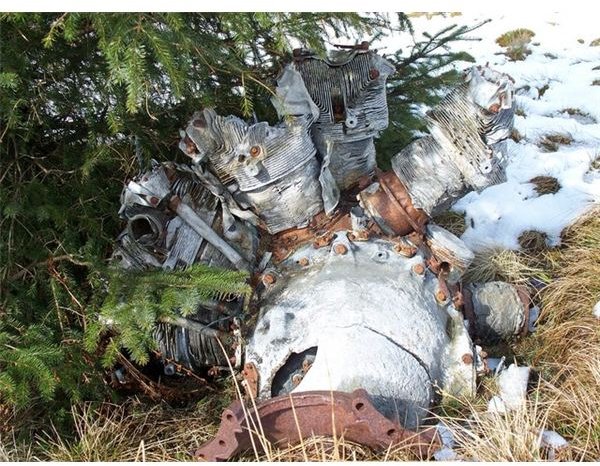Power Recovery Turbines for Large Radial Engines
Introduction
A power recovery turbine or PRT is a heat-energy recovery device for a reciprocating engine that uses the exhaust gases as an energy source. It was developed during the time of World War II to make engines for aircraft more powerful. The PRT was rather like half a turbocharger, connected directly to the crankshaft by a short driveshaft, or fluid coupling, in order to directly transfer the power recovered from the exhaust gases.
At that time, it seemed to be very beneficial because it increased the efficiency of the engines without using any extra fuel. However, its advantages did not compensate for its disadvantages, particularly as concerns engine reliability, and PRTs became one of the biggest failures in engine development history.
History of Power Recovery Turbine Engines
Here are two of the famous World War II engines that used PRTs.
Wright R-3350
One of the most influential radial aircraft engines invented in the United States was the Wright R-3350 duplex (multi-row) Cyclone. This power
recovery turbine was developed to deliver reduced fuel consumption, and thereby better economy to manage the civilian market during the war. It saw its most successful use on the B-29 bomber.
Three power recovery turbines were attached to the exhaust piping. This exhaust piping was responsible for delivering exhaust gases from a group of six cylinders, all of which were attached to the crankshaft. These PRTs were attached to the engine crankshaft by fluid coupling to develop more power. Although the invention of PRTs could save about 20 percent of the wasted heat power, it was also a cause of troubles for the engines. The turbines had a negative impact on the engine and its reliability. Due to this, most of the field mechanics nicknamed them “Parts Recovery Turbines.”
Actually, use of this turbine caused an increase in back pressure and thus the operating temperature of the cylinder, which are the responsible factors for high wear inside the engine and its failure.
Dobrynin VD-4K
The basic design of the VD-4K, which was similar to the M-253K, was developed from the VD-3TK engine. it contained six monobloc banks, each with four fluid-cooled cylinders. The power recovery turbines were attached between the cylinder banks, and the engine was jointed to a geared centrifugal supercharger and a turbocharger. These parts combined made the VD-4K a power recovery turbine, though not exactly like the PRTs used on the big Cyclone.
This project was started keeping in mind the high power delivery of the engine. However, the engine was not able to provide required power for the aircraft, particularly at altitude. This was the main cause of failure of the project.
Efficiency
It is concluded that if we use an air-fuel mixture ratio of 10:1, then the efficiency of the engine would be 17% without PRT, and 22.5% with PRT.
Advantages
This technology was introduced to increase the power output of engines without increasing the fuel consumption. The main advantage of this technology is that it can generate much higher power, and thereby an increase in the speed of the vehicle and aircraft. It generates mechanical work by absorbing the heat of the exhaust gases and transfers it to the crankshaft.
The other advantage is that it reduces the pollution due to the exhaust gases of the engines.
Disadvantages
Many experiments have been done regarding these turbines, but none of them was able to remove the negative impacts of this technology on the engine components. This turbine increases the pressure and temperature inside the engine. The parts of the engine fail due to the occurrence of wear and tear at high pressure and temperature. This may cause unwanted accidents and high maintenance costs. Because of this, such types of engines were also called monsters for the maintenance and repairs required.
This turbine makes the whole system very complex, which is difficult to manufacture. Furthermore, the material used for the construction of the engine must be of high quality with high resistance to wear. Due to this the cost of such types of engines is very high.
Conclusion
The power recovery turbines are very harmful for the engines, though this idea initiated the development of new types of engines that use the energy of exhaust gases without harming the parts of the engine. Nowadays, although supercharging remains relatively rare, the idea lives on in form of turbochargers, which are very successful in cars, trucks, and small airplanes.
References
Reference-www.utterpower.com
Reference-www.flightglobal.com
Reference- Wikipedia.com
Reference-www.pilotfriend.com
Image-geograph.org.uk
